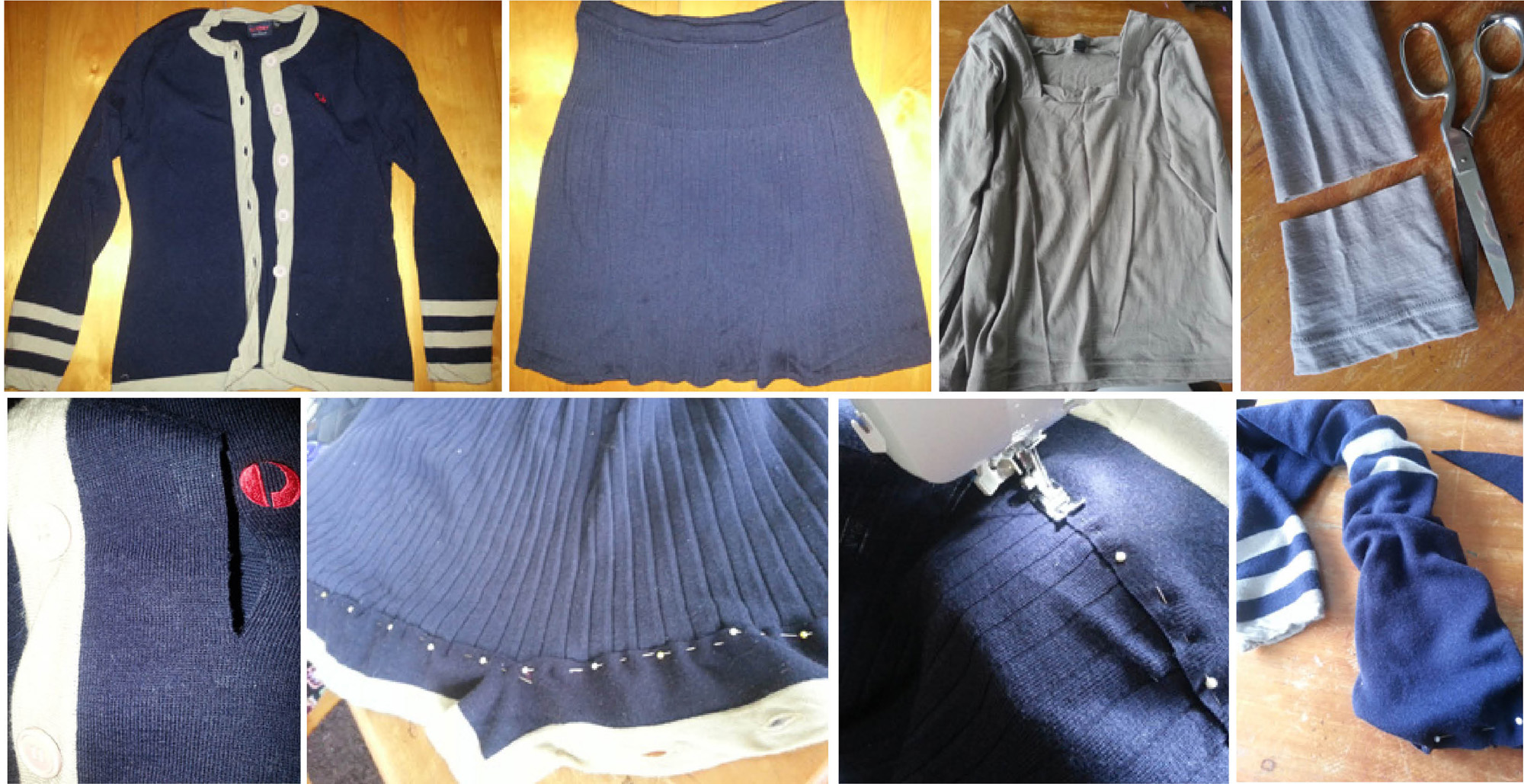 Natural resources are finite and it is great to see Sweden announcing that it has created technology to recycle all materials that contain cellulose, as reported in The Guardian recently.
Natural resources are finite and it is great to see Sweden announcing that it has created technology to recycle all materials that contain cellulose, as reported in The Guardian recently.
Apparently old cotton clothes are brought into a factory where they are shredded and mulched into porridge-like goop from which the non-recyclable pieces like zips and buttons are removed. The goop is then further broken down before being turned into a fibre substance which become threads and then rayon-like fabric. Reconstituted fabric is a mechanical way to reuse the mountain of waste clothing generated by fast fashion.
A creative way of reusing natural fibres is by individual refashion – cutting and resewing existing clothing to suit your own needs. This is what I’m doing every day this year with Sew it Again and Sew 227 is a refashion of wool garments from various op shop excursions.
The navy wool skirt was a big dowdy, so I jazzed it up by adding a hem-trim cut from a navy cardigan. The cardigan had a taupe border around all edges and appeared to once be a uniform (had Australia Post logo). Having outlived its usefulness as a uniform, I rescued it from an opshop because it was still a great natural-fibre resource.
Looking at the circumference of the skirt and the total length of the cardigan border, I guessed there would be enough to hem the skirt and proceeded to cut off a 7cm wide border, enough to bypass the aforementioned logo. I pinned this to the skirt hem and zigzagged in place (there was a little left over, saved for another day) with the button holes and buttons acting as a hem feature. The colours matched perfectly and the zigzag seam is barely noticeable. I used the sleeves and leftover jumper to make a scarf. I wore this with a matching op-shop-found taupe wool skivvy, from which I cut off the too-long flared sleeves to suit my size. Even the shoes I’m wearing (photo above) are op-shop found. So much treasure in op shops – but I must donate some back during National Op Shop Week on August 24-31. 